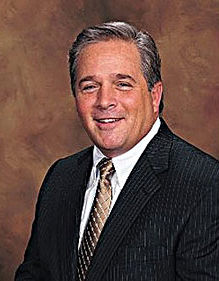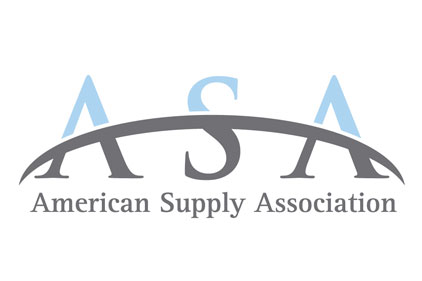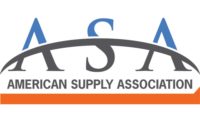
|
| Mike Adelizzi, ASA Executive Vice President |
It has been just more than six years since the American Supply Association hired Michael Adelizzi to manage the national organization. We thought it would be a good time to gain his perspective of where the association was when he took the helm, his thoughts about the association’s accomplishments over the past six years and his vision for ASA’s future.
ASA:So it has been just over six years since you took over as executive vice president and chief operating officer at ASA. Are you pleased, surprised or disappointed where ASA is today? Is it where you thought it would be?
Adelizzi:I am pleased. Actually, I am more than pleased about our current situation. I definitely am not surprised. When I took over in 2007, the association had diminished from its heyday and had lost a great deal of relevance. At the same time, ASA had a tremendous core of extremely bright and motivated members that wanted to rebuild. Together, our leadership and staff developed a strong strategic plan, stuck to it, cut irrelevant programs, rebuilt our financial resources and invested in some great programs such as advocacy, education and business intelligence.
As a result, today we are enjoying two years of net membership growth, a strong financial reserve that is being used to continue to add new programs and we have once again reemerged as the leader. Today, no one doubts that ASA is back and thriving.
ASA:Today, ASA has radically expanded its offering of programs as well as greatly improved its value proposition. All of this was accomplished during a depressed economy. How did ASA do it?
Adelizzi:Hard work sounds like too simple of an answer, but that is a big part of our success. More importantly, we have great leaders that have not been afraid to be bold. Two examples come to mind. When the markets were crashing, the ASA Education Foundation’s Karl E. Neupert Endowment Fund, which funds a large percentage of what we are doing in education today, took a hit as well. Instead of shutting everything down, our leadership doubled down by investing reserves to develop ASA University, its five colleges, 14 curricula and the technical ability to electronically deliver training to our members.
Another great example is government affairs. Having a lobbying firm that cost us $350 per hour to represent ASA in Washington, D.C., in addition to having a long-range plan calling for us to become more engaged, our core members increased their own annual dues so that we could hire a full-time ASA staff person to work in Washington. In a sense, it is no secret how we have done so well. Much like our members’ businesses, we find good people (our members) and let them move mountains.
ASA: We’ve heard you say that ASA has just more than 300 distributor member firms and that you believe there are roughly 500 more out there that are not affiliated with ASA. Does it bother you that those 500 firms are not members of ASA?
Adelizzi:Sure it does. Sometimes it is depressing to think 500 firms will sit back and let 300 other firms carry the water for them. We all are together in this industry, meaning everyone should step up and help. If everyone joined and helped ASA in Washington, we could become a formidable force. Think about it: 1,000 companies with 100,000 employees all engaged in seeking change in Washington. We would be a force that would have to be dealt with.
ASA:What were the barriers over the past six years that needed to be overcome to gain the success you are having today?
Adelizzi:The availability of resources, poor perceptions of our relevance, stagnation and programs that distracted us from our core purpose coupled with a dead trade show, no long-range vision and members that had quit on us had created an overall general malaise.
ASA:What are the barriers today that you will have to overcome in the next five years to continue to reach new heights?
Adelizzi:The ego of some companies and individuals thinking they are better than the industry, a lack of unification, industry groups deciding to copy what ASA is doing instead of joining with us, the amount of disposable time distributors have to volunteer and become involved, our next generation of business owners not necessarily being association-oriented and, of course, to a degree, consolidation.
ASA:What are the greatest challenges ASA members will be facing in the next five years that could hurt their businesses? What will ASA do to help them overcome these challenges?
Adelizzi:A totally dysfunctional and antagonistic government, an uncertain economy, the availability of an educated labor force, consolidation, a more sophisticated consumer and a growing number of Americans with declining expendable incomes. Keeping focused on the ASA Long Range Strategic Plan that we annually update will be a key. We have already identified these barriers and are developing plans to deal with them. Specific examples are getting industry buying groups to become more engaged behind ASA’s advocacy efforts, reaching out to young people and attracting them to our industry to build our industry’s bench and expanding on our business intelligence to guide our members’ decision-making ability.
ASA: What’s on the short-term horizon for ASA?
Adelizzi:Short-term, we are looking at ways to enhance our successful forecasting program through “Phase 2” later in 2014. More near-term, ASA will launch a career recruitment effort that will attract high school, community college and select four-year university students to the PHCP and PVF industry. We currently are developing informational videos and printed materials that cover all the career options available in our industry. When you hear the term industrial distribution, many of us think of warehouse workers. That only is a small part of the whole package. Our industry offers many opportunities in any part of the country where a young person may want to start a career. Employment opportunities include warehouse operations, sales, marketing, IT, finance, human resources, accounting and purchasing at both distributor and manufacturing firms. We are a vibrant industry that offers a tremendous amount of variety, which is exactly what young people are looking for today.
Another part of our career recruitment effort will be an online job board that will link opportunities available at our member firms with people looking to start or advance a career. You will also see us launch our Masters of Industrial Distribution, which will give our members the ability to formally train their branch managers. ASA also has recently ramped up our ability to market our members to industry customers in both the PHCP and PVF sectors. PVF Outlook and PB Outlook magazines already are reaching thousands of customers with critical information that our members are telling us they want their customers to hear. In a nutshell, ASA has become a marketing partner with our members.
ASA:Give us your elevator speech. Why should a distributor join ASA?
Adelizzi:Ability sums it all up. ASA gives our members the ability to adapt, grow and succeed.




